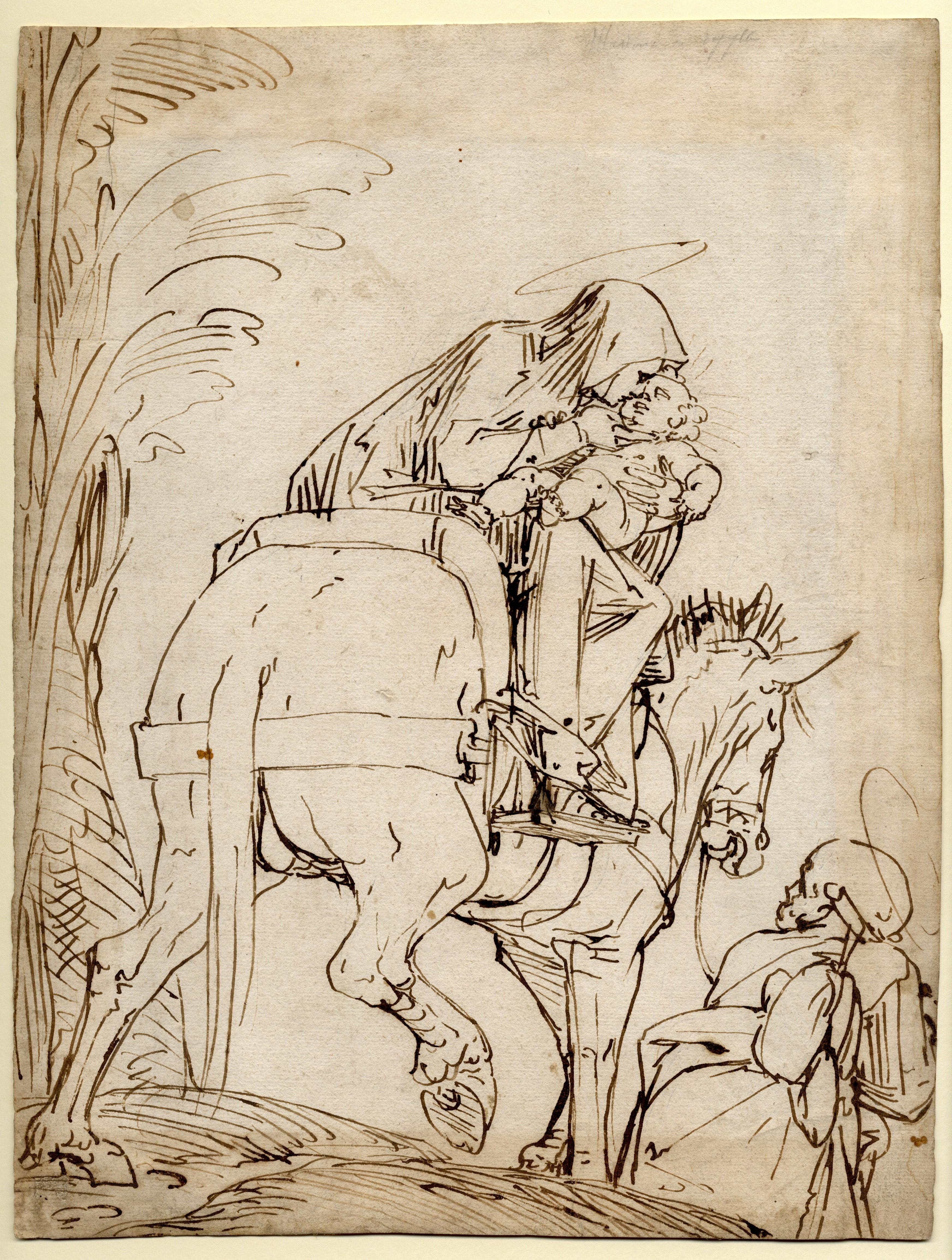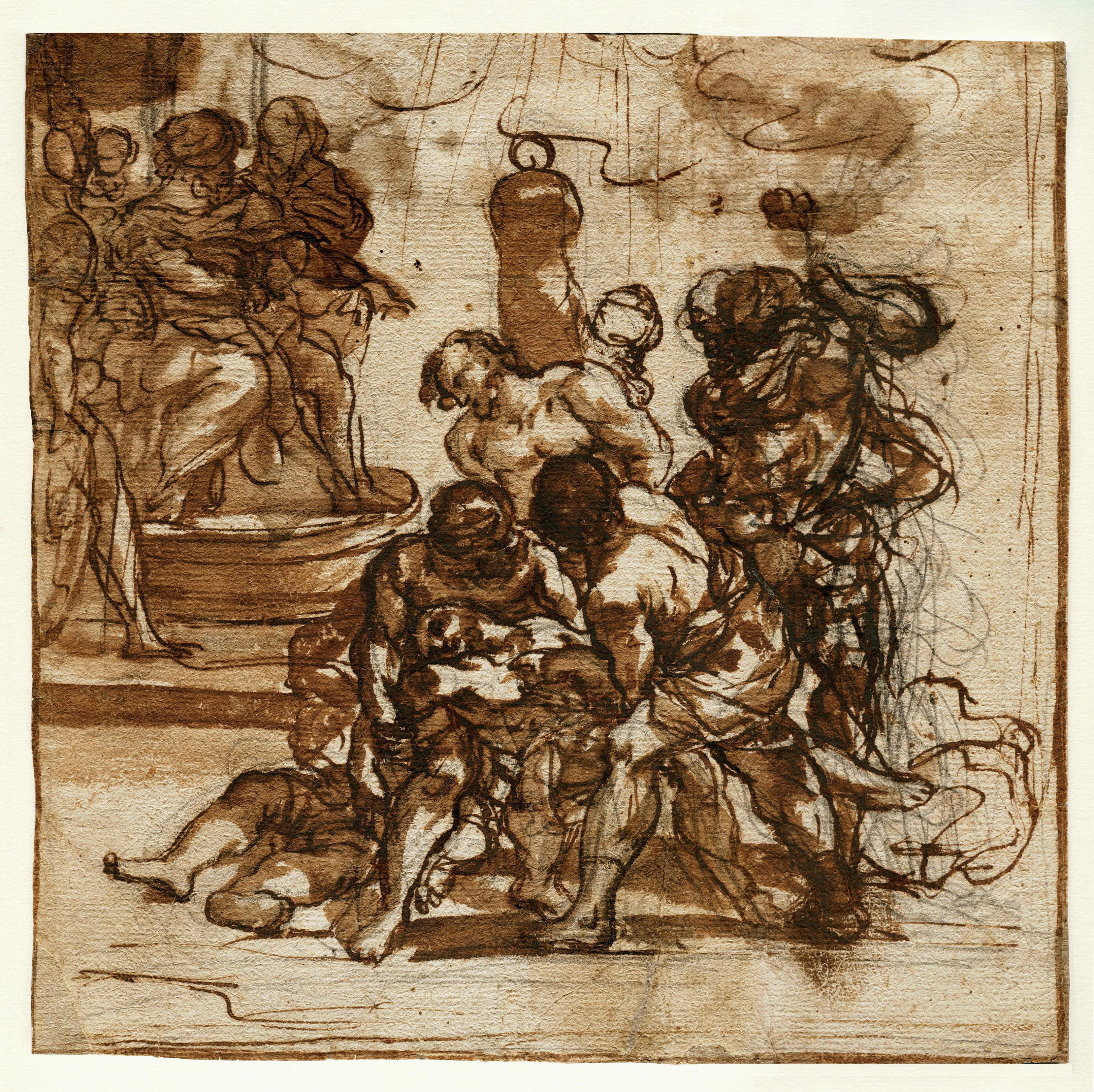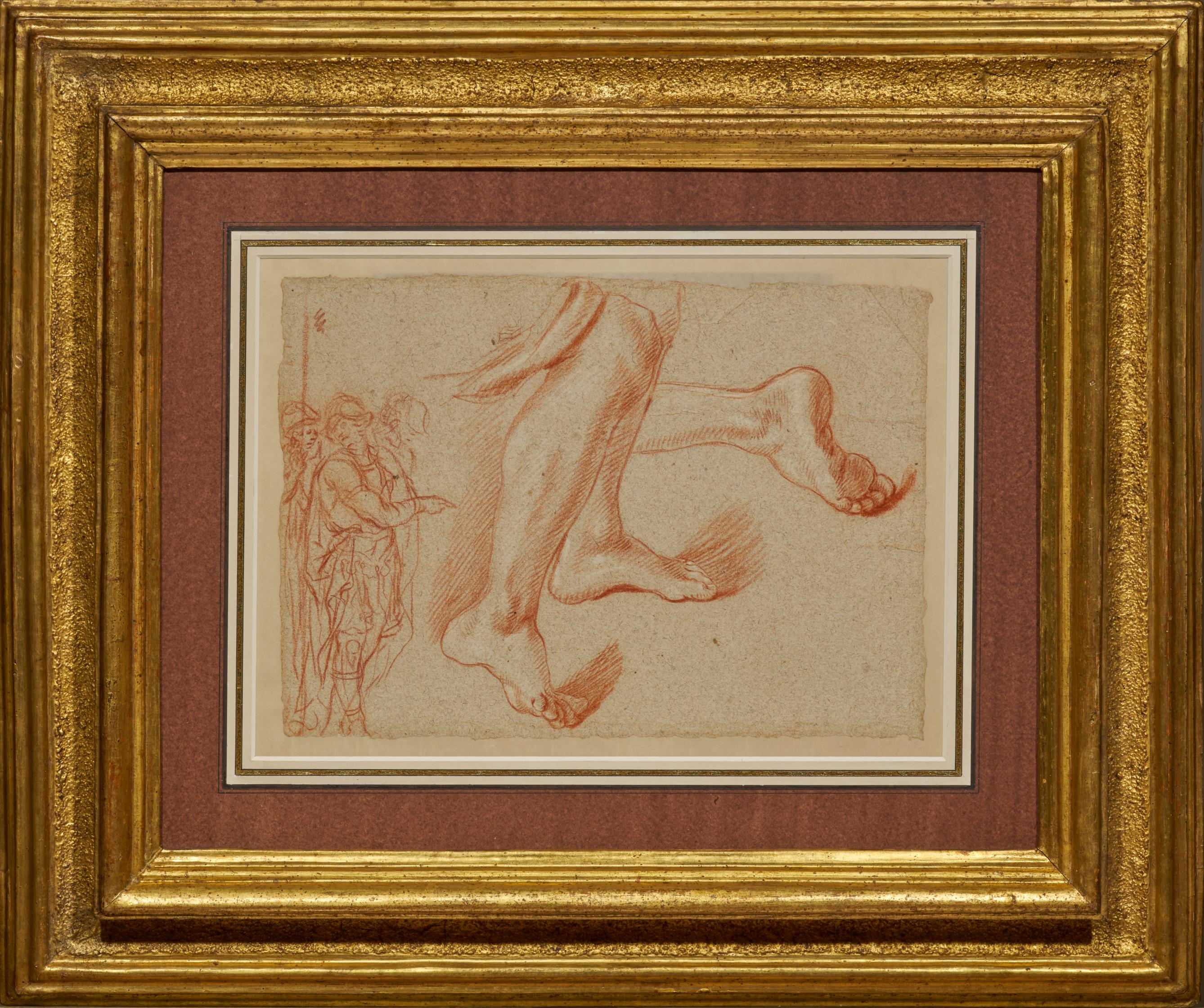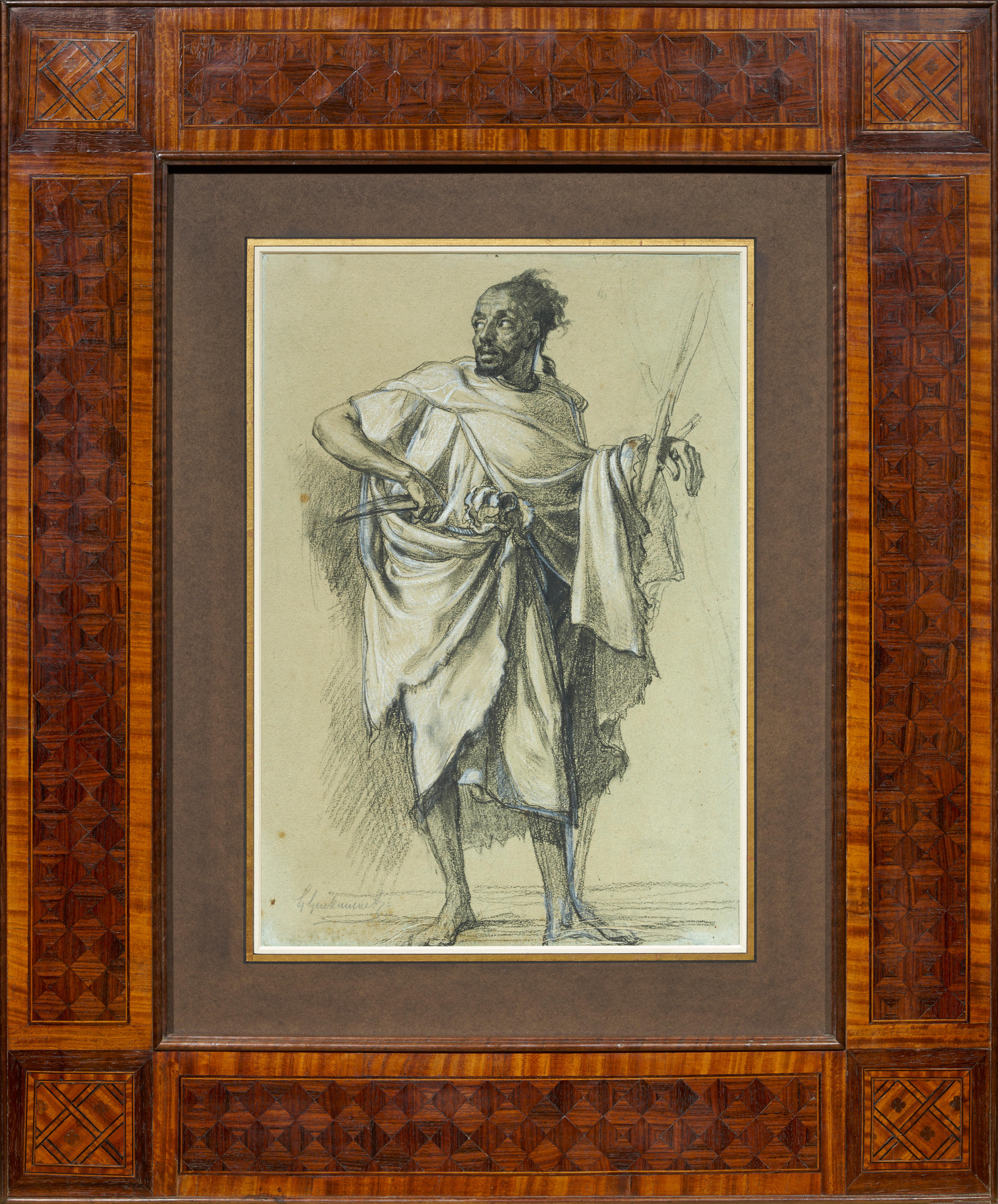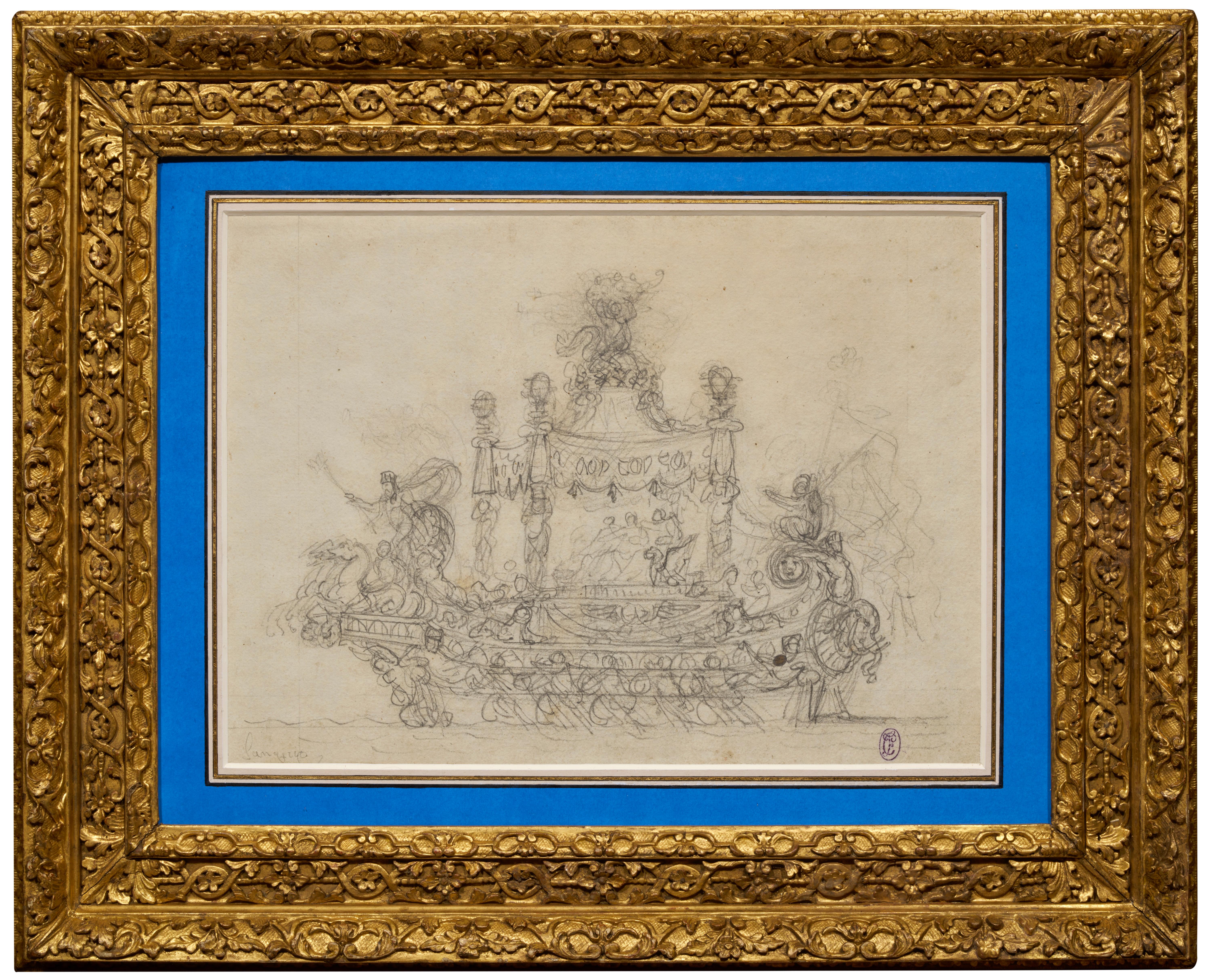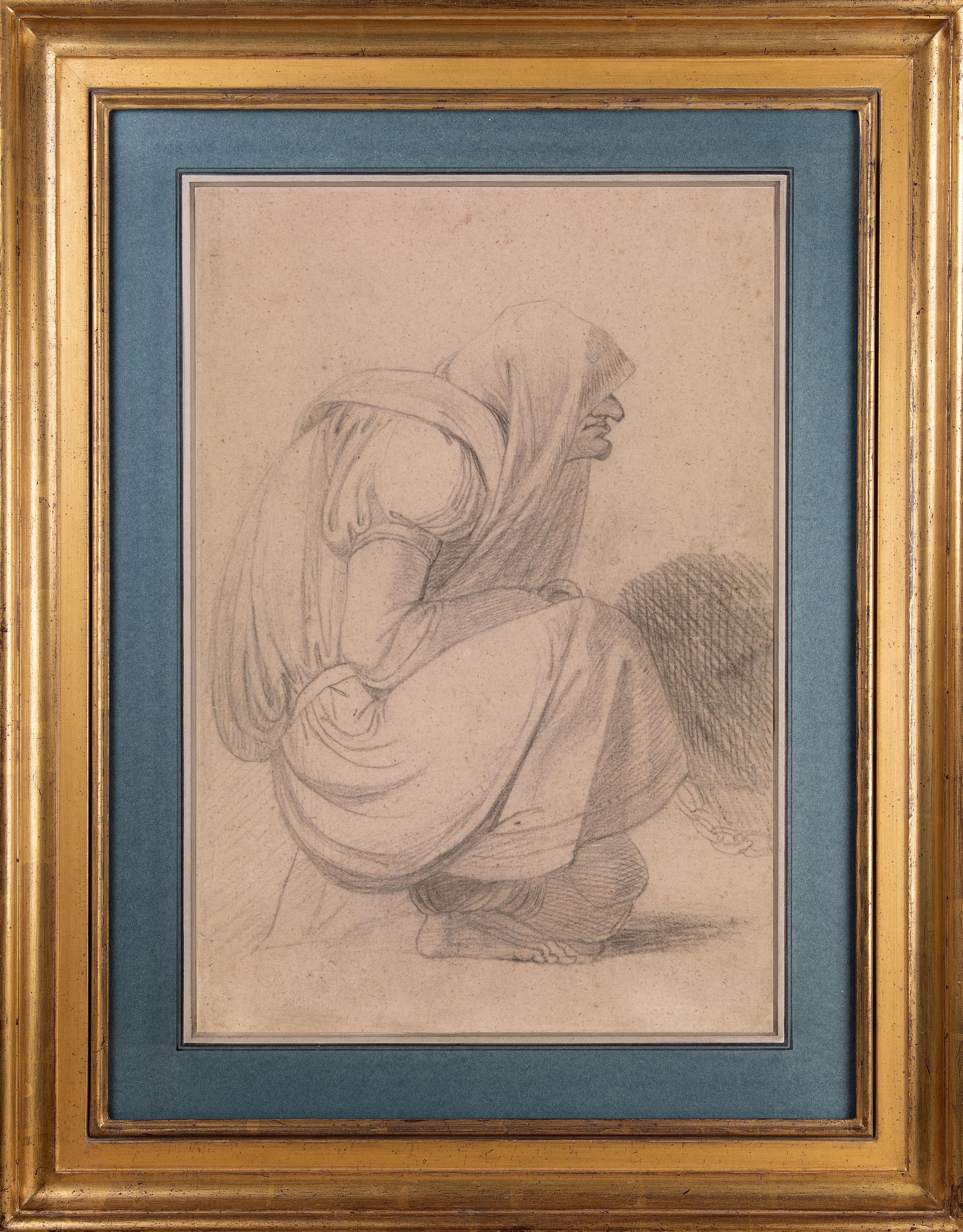Items Similar to Dancing Couple (recto) Various sketches (verso)
Want more images or videos?
Request additional images or videos from the seller
1 of 7
Dancing Couple (recto) Various sketches (verso)1770
1770
About the Item
Attributed to HUBERT ROBERT (Paris 1733 - 1808)
Dancing couple (recto) Various sketches (verso)
Red chalk and charcoal on the reverse
numbered in pencil “4229”
circa 1770
34 x 21 cm
Unidentified watermark
Provenance:
Lucien Wolff, Paris; By descent;
Private collection, Paris.
Complete research on request
Online exhibition on our website
- Attributed to:Hubert Robert (1733 - 1808, French)
- Creation Year:1770
- Dimensions:Height: 13.39 in (34 cm)Width: 8.27 in (21 cm)
- More Editions & Sizes:UniquePrice: $19,973
- Medium:
- Movement & Style:
- Period:1770-1779
- Condition:
- Gallery Location:PARIS, FR
- Reference Number:1stDibs: LU2258214226882
About the Seller
No Reviews Yet
Vetted Seller
These experienced sellers undergo a comprehensive evaluation by our team of in-house experts.
Established in 2010
1stDibs seller since 2022
- ShippingRetrieving quote...Ships From: PARIS, France
- Return PolicyA return for this item may be initiated within 14 days of delivery.
More From This SellerView All
- Diana and her Nymphs bathingLocated in PARIS, FRAttributed to LAURENT HUBERT (Active circa 1749 - 1780) Diana and her Nymphs bathing Red and black chalk on paper heightened with white 49,5 x 33,5 cm Provenance: Private collectio...Category
Late 18th Century French School Figurative Drawings and Watercolors
MaterialsChalk
- Study for a frescoLocated in PARIS, FRAttributed to Francesco PENNI (1488 – 1528) Study for a fresco Pen and brown ink, brown wash heightened with white on prepared paper 14 x 12 cm On the mount, handwriting inscriptio...Category
16th Century Renaissance Figurative Drawings and Watercolors
MaterialsInk
- Frederick I of PrussiaBy Georg Philipp Rugendas the ElderLocated in PARIS, FRGeorg Philipp I RUGENDAS (1666-1742) Frederick I of Prussia Red chalk, ink and brown wash on paper 45x42 cm This drawing has been long considered representative of Charles VI. In r...Category
Early 1700s Animal Drawings and Watercolors
MaterialsInk
- Jacopo Zanguidi Dit Bertoja (1544 - 1574) - Important 16th Century DrawingLocated in PARIS, FRJacopo Zanguidi BERTOJA (1544-1574) Combat of five figures, bas-relief from the School of Athens after Raphael Ink on paper 43×34cm Interesting thing According to Professor David E...Category
16th Century Renaissance Portrait Drawings and Watercolors
MaterialsInk
- Study of a male nudeLocated in PARIS, FRConstance CHARPENTIER (1767-1849) Study of a male nude Charcoal and highlights with white chalk on paper Dimensions: 56.5 x 43.87 cm Provenanc...Category
Early 19th Century Academic Nude Drawings and Watercolors
MaterialsCharcoal
- Snowy Landscape, 1915By Alexandre AltmannLocated in PARIS, FRAlexandre Altmann (1878-1932) Snowy Landscape, 1915 Oil on canvas, 50 x 65 cm Provenance: Private collection, France Captured in the winter tones of 1915 by Alexandre Altmann, 'Sn...Category
1910s Post-Impressionist Landscape Paintings
MaterialsOil
You May Also Like
- The Flight into EgyptLocated in New York, NYInscribed: 3. una Madonna che va in Egitto, verso, and Madonna che va in Egitto, recto Provenance: Private Collection, UK, since 1999 This expressive and boldly executed drawing is the work of Luca...Category
16th Century Old Masters Figurative Drawings and Watercolors
MaterialsInk, Paper, Chalk, Pen
- The Martyrdom of the Santi Quattro CoronatiLocated in New York, NYProvenance: Private Collection, UK After initial training under Justus Suttermans and Vincenzo Dandini, in 1673 Anton Domenico Gabbiani embar...Category
17th Century Old Masters Figurative Drawings and Watercolors
MaterialsChalk, Paper, Ink, Pen
- A red chalk study sheet by Baldassare Franceschini, known as VolterranoLocated in PARIS, FRThis fresh sanguine sheet presents various studies placed next to each other in no apparent order. Two of the feet studies are preparatory to the first major commission received by the young Baldassare Franceschini, shortly after his installation in Florence, the frescoes for the Medici Fastes. This cycle was executed between 1636 and 1646 for the Villa La Petraia, a Medici villa on the outskirts of Florence, which allows us to date this sheet to the artist's youth. 1. The Medici Fastes, the first major commission for a young artist Born in Volterra in 1611, the town from which he took his nickname, Baldassare Franceschini apprenticed with his father, a sculptor of alabaster, one of his home town's specialities, and studied with Cosimo Daddi (1540-1630), a local artist. The Marquis Inghirami, who spotted his talent, sent him to the workshop of Matteo Rosselli (1578 - 1650) in Florence, which was also attended by Francesco Furini (1603 - 1646). In 1636, Lorenzo de' Medici, the youngest son of Ferdinand Ier and Christine of Lorraine, chose the 25-year-old artist, again on the advice of the Marquis Inghirami, to decorate with frescoes the loggias of the inner courtyard of the Villa La Petraia, which he had just inherited on the death of his mother. The project lasted about ten years and included ten scenes placed symmetrically in two loggias on either side of the courtyard: four main scenes and six placed above the doors, each to the glory of a member of the Medici family. This decoration was his major secular project, but Volterrano also executed several religious frescoes and a few easel paintings, often with less success. Among the religious commissions, we can cite the dome of the Colloredo chapel dedicated to Saint Lucy...Category
Mid-17th Century Old Masters Figurative Drawings and Watercolors
MaterialsPaper, Chalk
- The Arab Butcher, a preparatory drawing by Gustave Guillaumet (1840 - 1887)Located in PARIS, FRThis intensely expressive figure is a preparatory study for "Arab Market on the Tocria Plain", a painting exhibited at the 1865 Salon and now in the Musée des Beaux-Arts in Lille. 1...Category
1860s Old Masters Figurative Drawings and Watercolors
MaterialsChalk, Carbon Pencil
- A dazzling Venetian Regatta Boat Study attributed to Alessandra MauroLocated in PARIS, FRThis stunning Baroque study depicts a regatta boat, a type of vessel developed in eighteenth-century Venice for the regattas organized by the Serenissima during visits by royalty and...Category
Mid-18th Century Old Masters Figurative Drawings and Watercolors
MaterialsChalk
- Drawing of a captive womanBy Henry FuseliLocated in London, GBCollections: Sir Thomas Lawrence, who acquired the contents of Fuseli’s studio; Susan, Countess of Guilford, née Coutts (1771-1837), acquired from the Lawrence estate; Susan, Baroness North (1797-1884), daughter of the above; Mrs A. M. Jaffé, acquired in France, c. 1950 to 2016. Black chalks, on buff-coloured paper Stamped verso: ‘Baroness Norths Collection / of Drawings by H Fuseli Esq.’ Framed dimensions: 26.38 x 20.63 inches This boldly drawn sheet depicting a seated figure was made by Fuseli at an important and highly productive moment in his career. The monumental drawing is closely related to another sheet by Fuseli in the British Museum which Schiff published as subject unknown. Both drawings were made when Fuseli was designing his most important sequence of historical works, including scenes from Shakespeare and Milton, The Nightmare and The Death of Dido which was exhibited at the Royal Academy to great critical acclaim in 1781. The present drawing does not relate directly to any of Fuseli’s finished historical paintings of the period, but evidently the image of a slightly menacing, seated and covered old woman was precisely the sort of motif he was playing with. It is notable that the same figure reappears later in Fuseli’s work as the witch from Ben Jonson’s Witch’s Song which Fuseli produced as both a painting and engraving in 1812. Fuseli returned to London in 1779 from a highly creative and productive period in Rome and established himself as one of the leading history painters of the period. Fuseli re-established contact with his old mentor Sir Joshua Reynolds, becoming a regular guest at his dinner table and visitor to his studio. The earliest and most striking manifestation of this strategy was Fuseli's Death of Dido, exhibited in 1781 at the Royal Academy. Executed on the same scale as Reynolds's version (Royal Collection), Fuseli's vertically oriented picture was hung directly opposite Reynolds's with its horizontal orientation, inevitably inviting comparison between the two works and garnering Fuseli much publicity and favourable reviews in the newspapers. The present, previously unpublished sheet, relates closely to a drawing now in the British Museum. That sheet shows the same seated old woman, drawn on a smaller scale and more schematic in design, seated next to an anatomical drawing of a man. The pose of this figure is related to the pose of Dido in his Death of Dido; the foreshortened torso, arrangement of head, oblique view of Dido’s features and arms all suggest that the study can be viewed as an initial thought for the composition. Fuseli may have initially thought of including the figure of the hunched and covered old woman. Drawn on identical paper to the British Museum sheet, our study is an enlarged depiction of the same figure, more elaborately delineated and developed. The presence of a chain to the right of the figure, suggests that the iconography was related in some way to a scene of imprisonment. Fuseli had first explored the motif of the hooded old woman in an early Roman drawing, 'The Venus Seller'. The idea of a grotesque old woman, hooded and with angular nose and projecting chin seen in profile was most spectacularly used by Fuseli in his sequence of paintings depicting The Three Witches from Macbeth. Fuseli seems to have kept the present sheet and may have returned to it when preparing a painting of The Witch and the Mandrake from Ben Jonson’s Witch’s Song from his Masque of Queens in 1812. Here the same seated figure looks out from under her hood and picks a mandrake by moonlight. Jonson’s drama had been performed at the court of James I in 1609, inspired the subject. To throw the nobility of the queens into relief, the poet added a coven of witches, one of whom declares: ‘I last night lay all alone, On the ground, to hear the mandrake groan; And plucked him up, though he grew full low, And, as I had done, the cock did crow.’ The figure was reversed in the associated etching which was published in 1812. It seems likely that the present drawing remained as part of Fuseli’s working archive of figure studies. The present drawing was presumably purchased with the bulk of Fuseli’s drawings after the artist’s death by Sir Thomas Lawrence. Lawrence’s large group of Fuseli drawings were then acquired by Susan, Countess of Guildford (1771-1837). Lady Guildford was the eldest daughter of the banker Thomas Coutts (1735-1822), who himself had supported Fuseli’s journey to Rome in the 1770s and had remained one of the artist’s key...Category
18th Century Old Masters Figurative Drawings and Watercolors
MaterialsChalk
